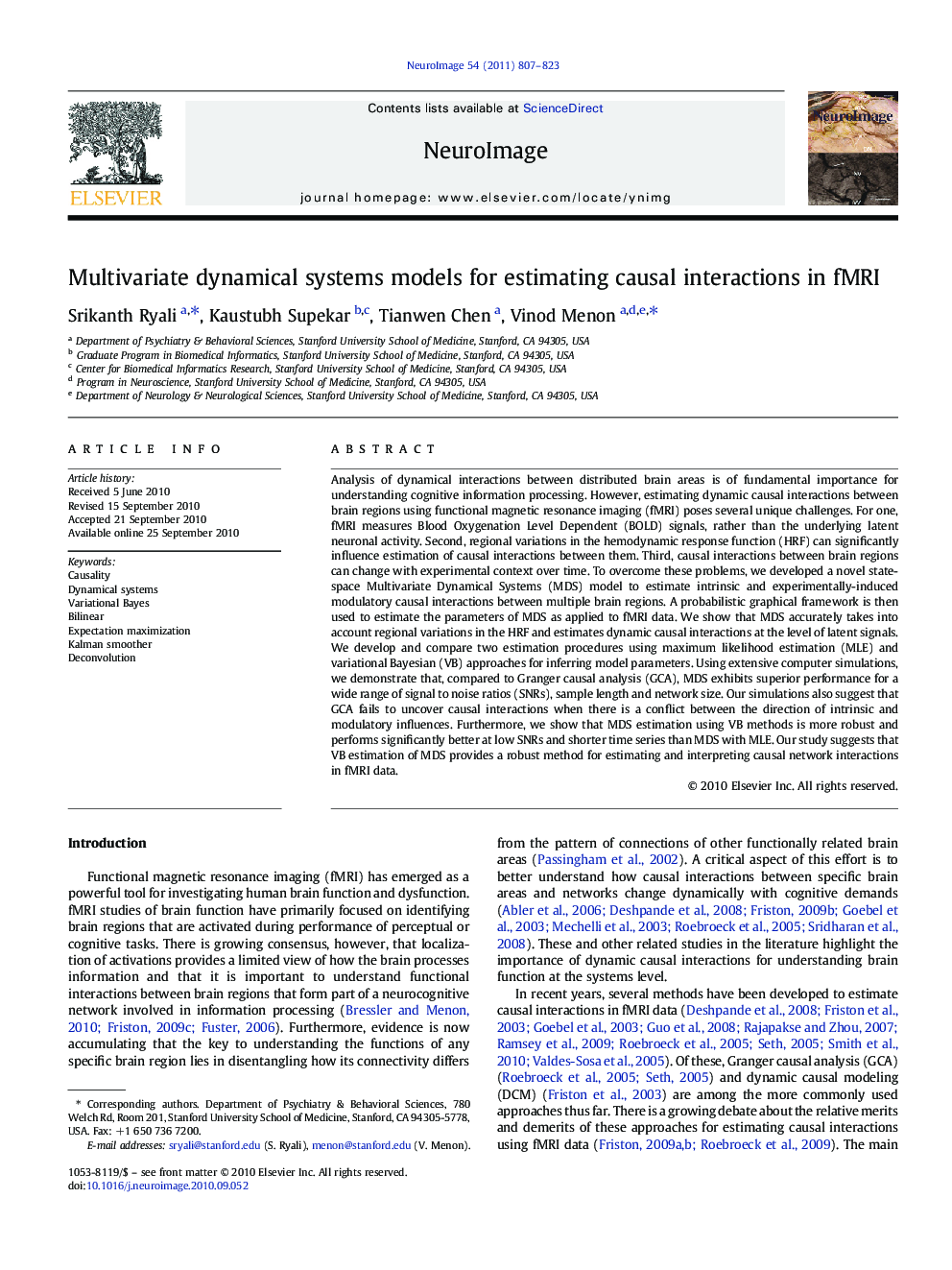| Article ID | Journal | Published Year | Pages | File Type |
|---|---|---|---|---|
| 6034300 | NeuroImage | 2011 | 17 Pages |
Abstract
⺠MDS uses a vector autoregressive state-space model incorporating both intrinsic and modulatory causal interactions. Intrinsic interactions reflect causal influences independent of external stimuli and task conditions, while modulatory interactions reflect context dependent influences. ⺠Causal interactions in MDS are modeled at the level of latent signals, rather than at the level of the observed BOLD-fMRI signals. ⺠We develop and compare two MDS estimation procedures using maximum likelihood estimation (MLE) and variational Bayesian (VB) approaches. ⺠Using extensive computer simulations, we demonstrate that, compared to Granger causal models, MDS exhibits superior performance. Among MDS methods, VB showed a superior performance at low SNRs and shorter time series.
Keywords
Related Topics
Life Sciences
Neuroscience
Cognitive Neuroscience
Authors
Srikanth Ryali, Kaustubh Supekar, Tianwen Chen, Vinod Menon,
